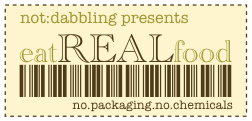 After spending the last two weeks fused to my couch to watch figure skating at the Olympics, I've been hearing a lot about the tension between artistry and technique.
After spending the last two weeks fused to my couch to watch figure skating at the Olympics, I've been hearing a lot about the tension between artistry and technique.Cooking and gardening are like that, too. Technique is important to get the result you want, and each pursuit has an inherent aesthetic that is met even if you don't think about it. Green things are pretty; food tastes good.
But technique alone cannot bring joy, that ineffable element that stills your heart and calms your brain.
Especially in winter, as color becomes more monochromatic, tone and contrast become the main color statements in a garden— black dirt or red branches against white snow, the warmer areas that melt sooner creating lines through the garden, a shoveled path.
In winter you see more clearly the lines of a tree, and the texture of seedpods left for the winter. The dense branches of a shrub, especially if its red or orange or purple berries still hang on, add a contrasting round shape within the lines of the canes or branches, and the overall shape of the bush stands in contrast to the clean lines of architechtural elements like walkways, trellises and patios.
Line can also draw the eye up, an important direction in a small urban garden where you want to find as much space as you can.
In winter you lose scent in the garden, a design element less available to visual artists, but add a dimension of sound. When a snow cover dampens the noise, the rustle of leaves and the trickle of a pond become focal points.
Food aesthetic starts with scent and adds another element not available to visual artists: taste. But it needs to look good too. I made a delicious soup with greens, but you don't want to eat it, because it looks so nasty. The dimension of food to plate, the contrast of texture and shape, all combine to make a meal taste better because it looks good.I'm not talking about the precarious designs that high end restaurants feel required to make to justify outrageous prices, or the precious dribbles of a teaspoon of sauce (when what you really want is a cupful). Spare me from foodies who view meals as architecture. Food can be art even when it looks like food.
So I'll take a moment now, and combine the line of a spinach fettucini, with the creamy texture of an alfredo, and add a gentle golden color with a little winter squash.
Alfredo sauce with squash, with fettucini and toasted walnuts
• 1 cup pureed acorn squash
• 1 pint heavy cream (half and half will also work, don't tell the foodies)
• 1/4 cup (1/2 stick) unsalted butter, softened
• 1 cup freshly grated Parmigiano-Reggiano
• parsley, 1 teaspoon dried, or 1 tablespoon fresh, chopped very fine
• one cup crushed walnuts
• fettucini
Cut and seed the squash and roast until soft (about 1 hour in a 350F oven, face down on a greased baking sheet). Puree the pulp until smooth. (Set aside the leftover puree for acorn squash baba ganoush from Jeff Smiths wonderful Our Immigrant Ancestors)
 Hang on, don't turn the oven off. Spread a cup of walnuts, lightly crushed (not too fine) on a dry cookie sheet. Now turn the oven off, and put the walnuts in. They'll toast in the cooling oven while you're making the sauce.
Hang on, don't turn the oven off. Spread a cup of walnuts, lightly crushed (not too fine) on a dry cookie sheet. Now turn the oven off, and put the walnuts in. They'll toast in the cooling oven while you're making the sauce. Heat heavy cream over low to medium heat in a 2 quart sauce pan. Add butter and whisk gently to melt. Whisk in squash until fully incorporated. Sprinkle in cheese and stir to incorporate. (Reserve some cheese for topping.) Add pepper and parsley. Thin with a little milk, if necessary.
Cook the fettucini per package instructions; drain and mix in the walnuts. Mix in the sauce, and serve, with a little grated cheese.
This made a little over a quart, way more than we needed for two people, so some went into the fridge for a quick meal on some future tired night.









THanks a million for the great receipe.
ReplyDeleteExcellent I going to try it out now
Aanee xxx
Flowers Dublin